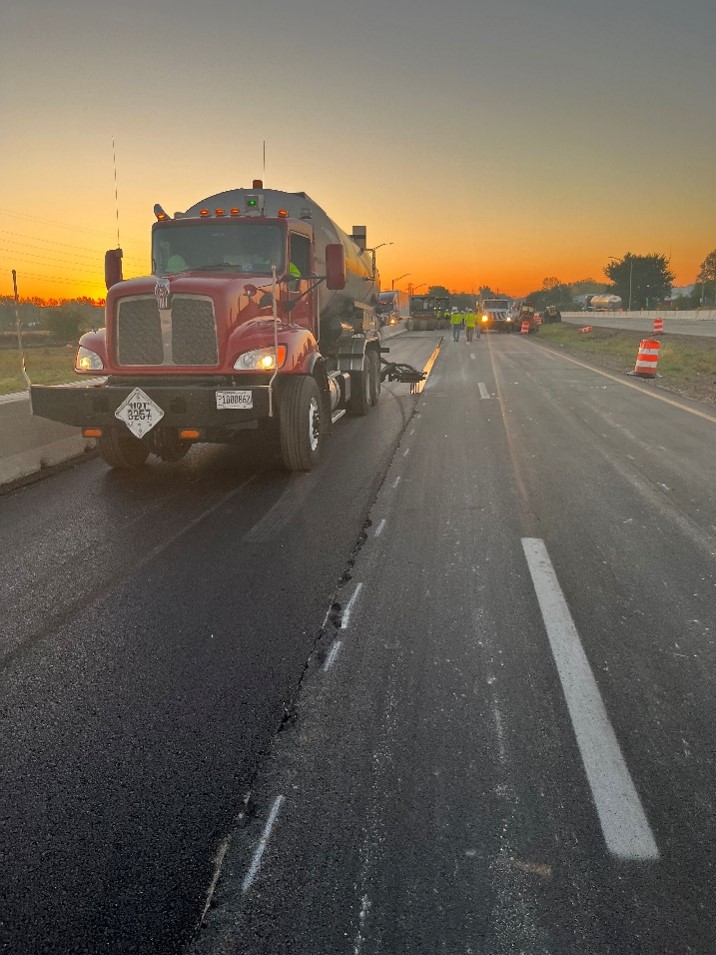Everyone in the road construction industry knows that the longitudinal joint is often the first part of the pavement to fail. This is because many joints are susceptible to elements such as air, water, and dust. These elements work their way down through the joint causing deterioration, cracking, and therefore creating potholes. When the longitudinal joint fails, the rest of the road soon follows.
That is why a Void Reducing Asphalt Membrane (VRAM) is recommended to be applied at the time of construction. When applied, it significantly reduces air voids in longitudinal joints from the bottom up. Therefore, protecting the road from air and water intrusion and extending the life of the road pavement.
Project Details
- Owner: Indiana Department of Transportation (INDOT)
- Prime Paving Contractor: Milestone
- Applicator: Illiana
- Location: Shelby County, Shelbyville, Indiana
- Date Constructed: October 2, 2023
Application Observations
Our specialty products team recently assisted with a VRAM application in the city of Shelbyville, Indiana on October 2, 2023. VRAM was applied to I-74 from 0.18 miles west of SR-9 to 0.13 miles east of SR-9, a total of 0.31 miles.
The application began around 7:40 a.m. on the westbound passing lane at the east end of the project heading west. The ambient temperature recorded was about 57F. The binder surface temperature was 60F and the material on board was 320F.
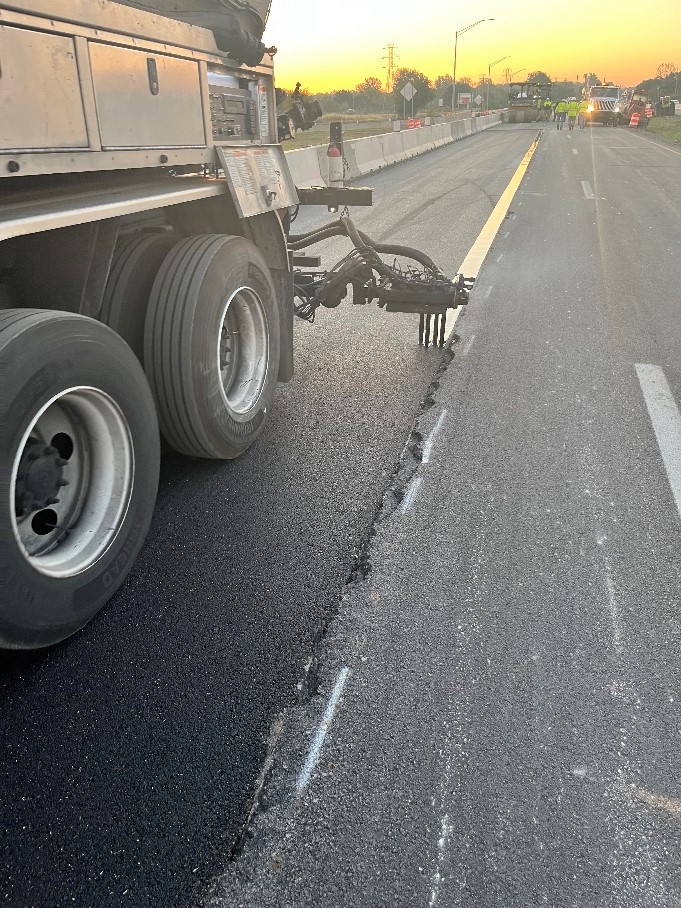
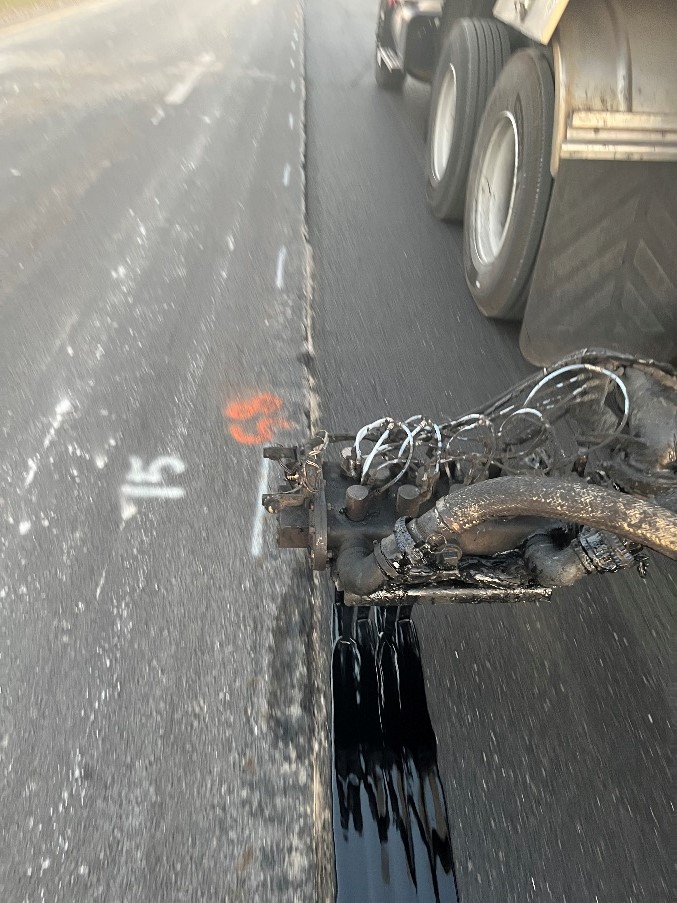
Personnel that were present on this project were Illiana staff, Aaron Wooley, Milestone, Tony Jenkins from American Structure Point Inc., and Cody Egan and Chad Crosby of Asphalt Materials Inc.
The band width on this project was targeted at 18’’ wide with a rate of 1.26 lb./ft or a 9’’ band with a rate of 0.63 lb./ft. The total gallons applied for the day were 473 gallons over 6,168 feet for an average of 0.65 lb./ft.
Paving Observations
Paving began around 10:20 a.m. the same day as the VRAM application. The equipment that was used was a CAT AP1055 paver, a Road Tec SB2500D shuttle buggy, two CAT CB13 steel drum rollers, a Ingersol Rand DD110HF steel drum roller, and a CAT CB54 steel drum roller.
The paver was the only piece of equipment in the trench, while the haul trucks and shuttle buggy were offset on top of the existing pavement. The ambient temperature at the start was 69F and climbed to 80F around noon. Weather conditions were sunny with a slight breeze.
The QC/QA HMA 4, 76.9mm SMA average temperature was recorded at 290F with a ½’’ migration. The rolling pattern consisted of two breakdown rollers working in tandem across the mat with the third working from high to low. The finish roller worked across the mat, and all rollers worked in a static mode.
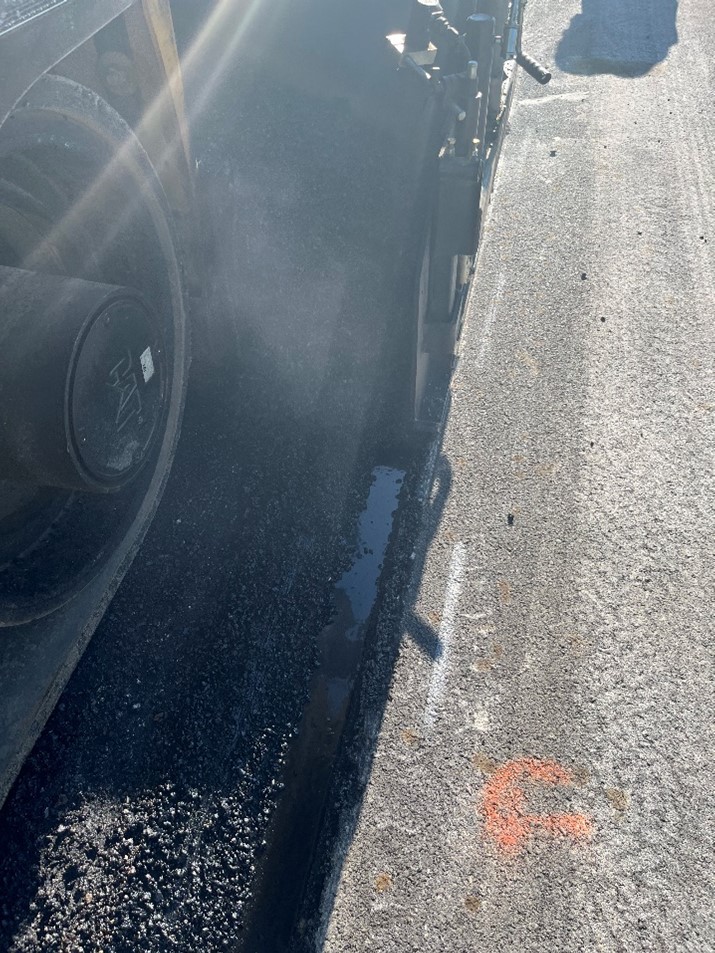
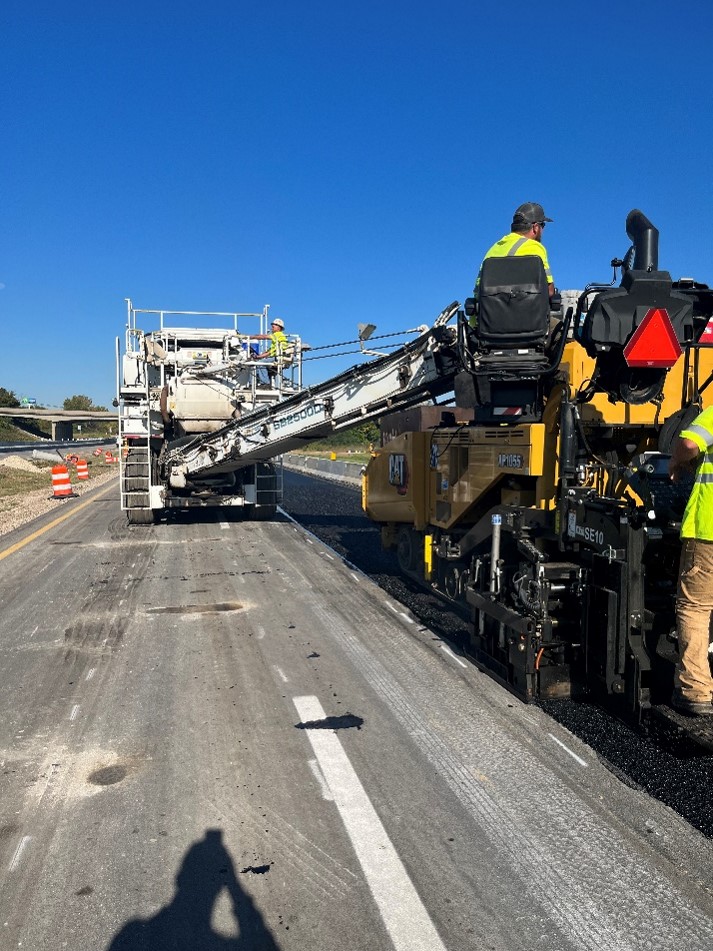
Conclusion
Observations over the past 20 years have shown that pavements utilizing VRAM last 3-5 years longer than those not constructed with VRAM, delivering positive long-term economic, social, and environmental benefits to road construction projects.
At Asphalt Materials, we understand that longitudinal joint deterioration has long been a problem for engineers, applicators, and the driving public. VRAM was developed to help create longer-lasting, safer roads through a collaboration between state transportation agencies, industry experts and the laboratories of The Heritage Research Group.
You can explore our interactive map to see more projects that have utilized VRAM at the time of construction and learn more about how longer-lasting roads save money, time and lives here.

